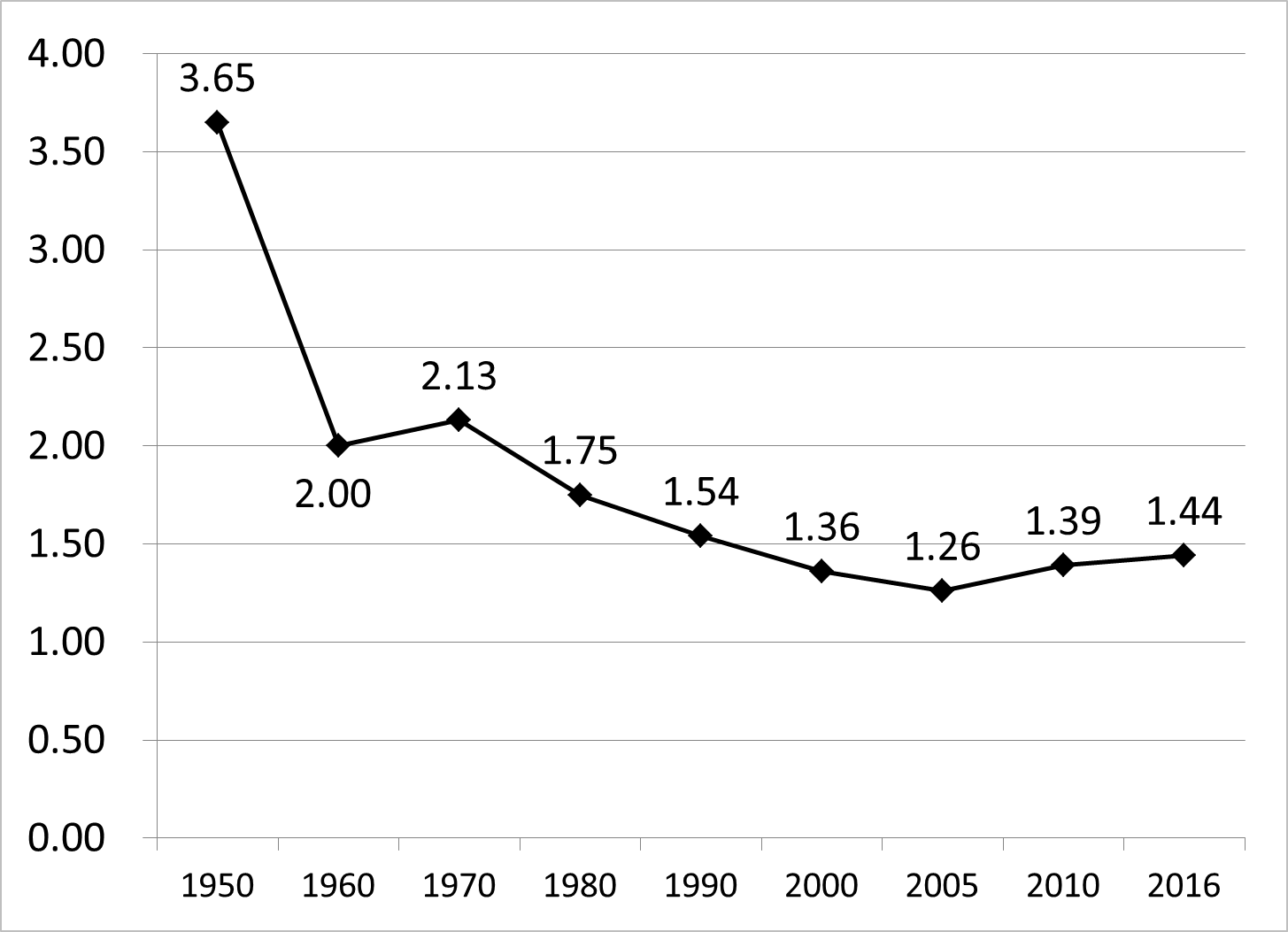Column Finance and the Social Security System 2018.04.06
【Aging, safety net and fiscal crisis in Japan】No.91: Total Fertility Rate by Prefecture
As shown in Figure 1, total fertility rate in Japan was low in 2016 at 1.44, although it has recovered a little after it plummeted from 3.65 in 1950 to 1.26 in 2005. The total fertility rate is a demographic index showing the average number of children that a woman can give birth to between the age of 15 years and 49 years. As shown in Figure 2, in addition to Germany, Italy, Singapore, and South Korea, Japan is also experiencing a declining total fertility rate.
Meanwhile, the Ministry of Health, Labor and Welfare has released a data set of total fertility rate by prefecture also. The latest data are for 2015 when the national average of total fertility rate was 1.45. As shown in Figure 3, the total fertility rate in Okinawa Prefecture is 1.96 which is the same as that of France. Whereas the rate in Tokyo, where 10.3% of the total population is concentrated, is the lowest at 1.24.

Source: Ministry of Health, Labor, and Welfare

Source: Ministry of Health, Labor, and Welfare

Source: Ministry of Health, Labor, and Welfare
